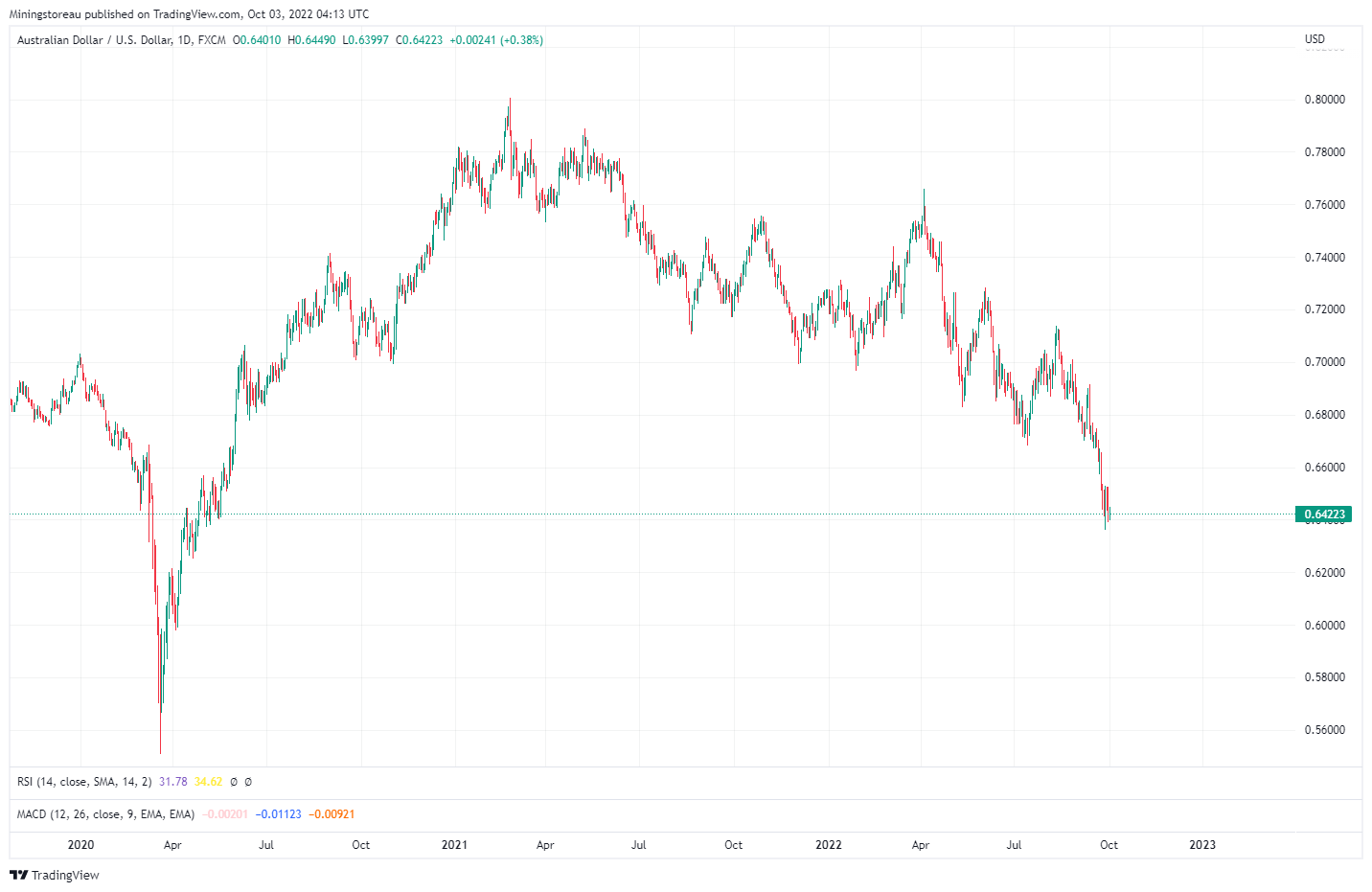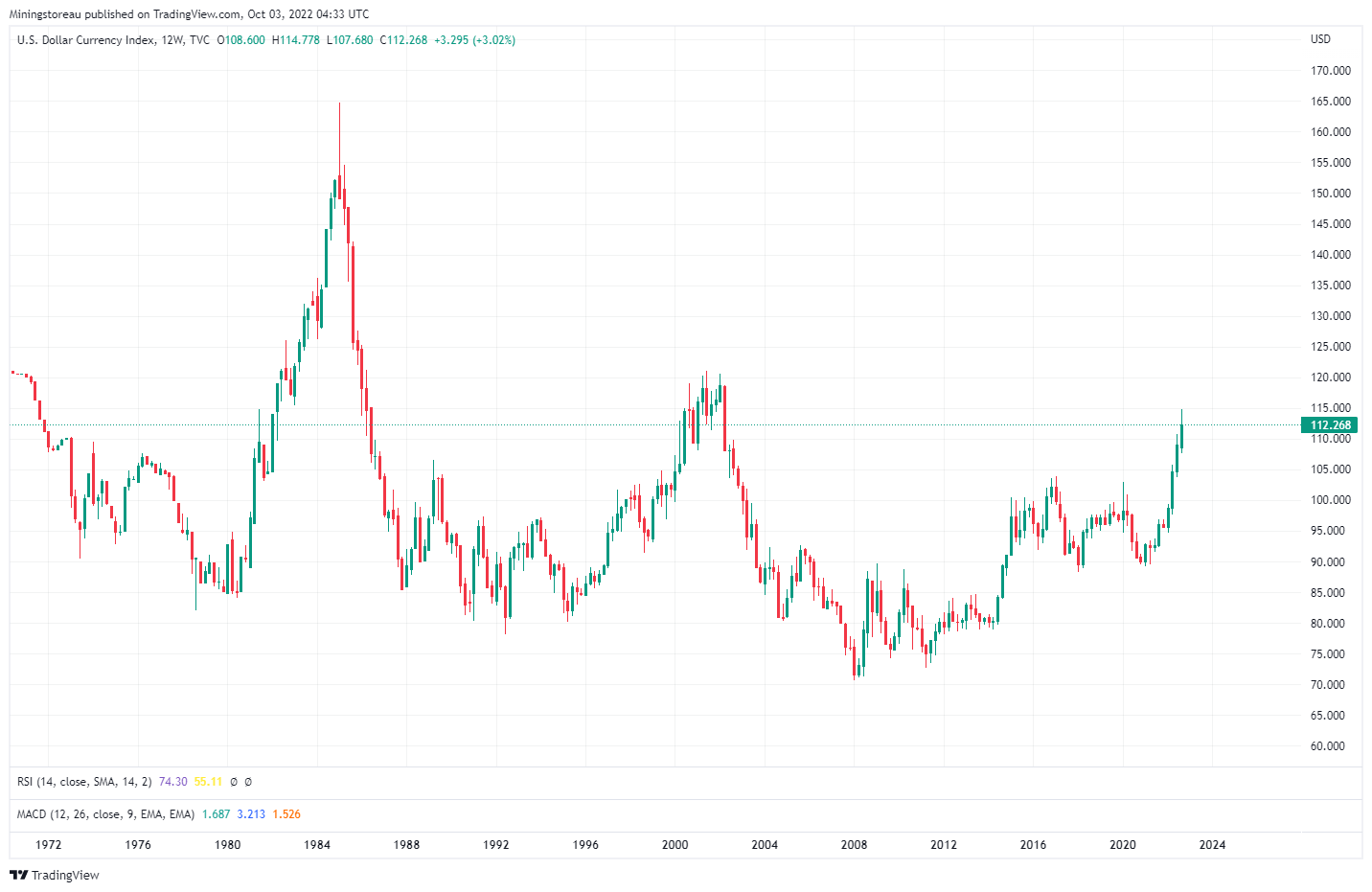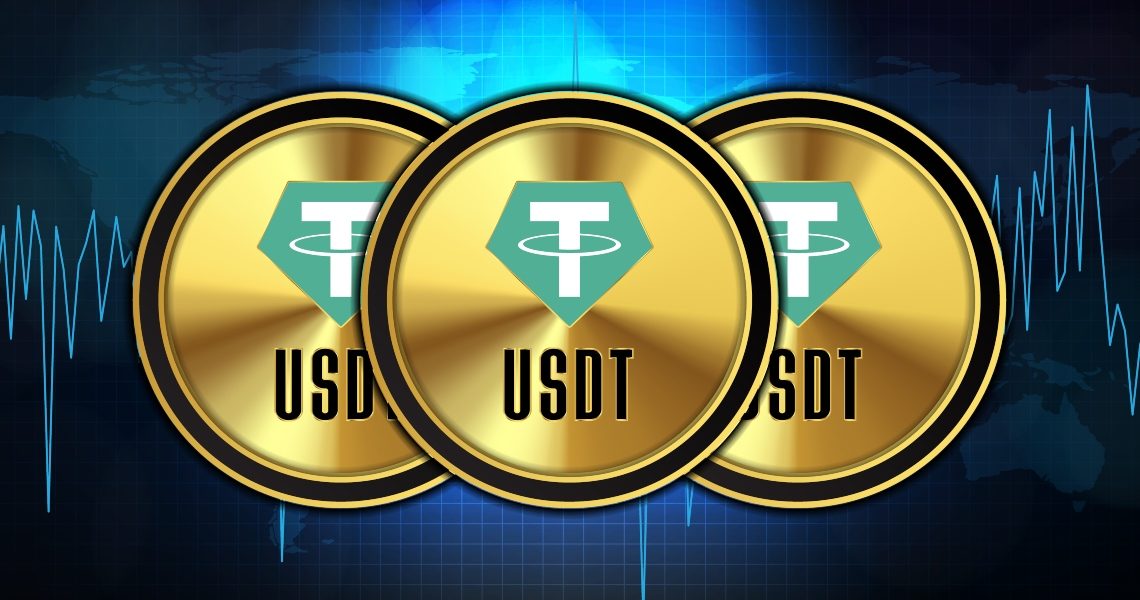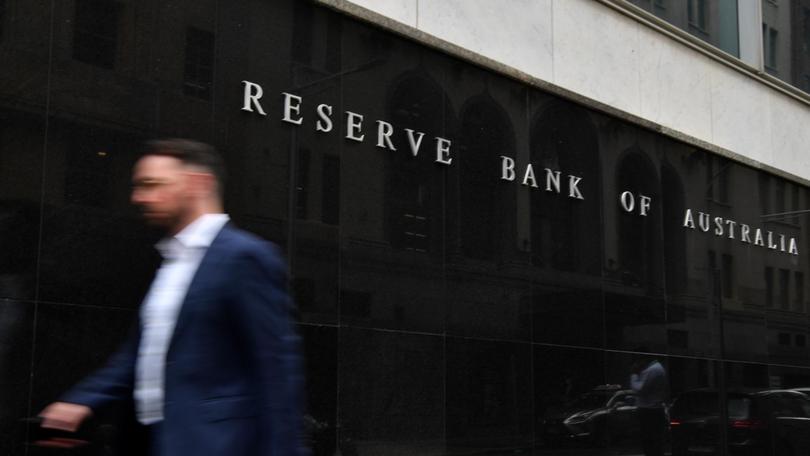The US dollar (USD) has strengthened significantly over the course of 2022 as the Federal Reserve hiked interest rates in an effort to quash hyperinflation. The U.S. Dollar Index, which measures the greenback against a basket of other currencies, is up nearly 18% so far this year.
As a result of these aggressive US Federal Reserve interest rate hikes, the Australian dollar has traded at a 28-month low of $0.636, plummeting and losing over 8% of its value against the greenback since the start of 2022.

The price of the AUD plummeting can be seen above in the TradingView chart
The recent volatile move downwards can be explained by the Federal Reserve raising interest rates by 0.75 percentage or 75 basis points yet again recently, following multiple hikes in order to curb inflation following a period of deflation, with wild money printing and spending throughout the pandemic.
As such, the US Dollar Currency Index (DXY), has seen levels not seen since 2002, currently trading at $112, close to an 18% increase across 2022, with demand flying.

DXY has risen to levels not seen since 2002 (per TradingView)!
In terms of the Australian dollar, Westpac chief economist Bill Evans downgraded his forecast in response to the latest interest rate hike by the Feds. Mr Evans sees the Australian dollar buying $0.65 at the end of the year, down from an earlier forecast of $0.69, and he now expects the US central bank to lift rates to 4.6 per cent by January 2023, up from 4.1 per cent.
“That means that over the remainder of 2022 there will be periods when the AUD will trade below the US65¢ level given the high volatility in currency markets to date,” Mr Evans added.
So, how have Australian cryptocurrency investors been able to mitigate a falling AUD, a rising USD and continued volatility for the rest of 2022? It actually works in their favour.
Risk averse investors are actually looking for a more stable store of value throughout downturns when it comes to investing in cryptocurrency, thus, using a stablecoin as a ‘safe haven’.
The fact of the matter is, cryptocurrency is an easily accessible way of exposing yourself to global markets, as you are always dealing in USD currency. This means that when buying or selling a cryptocurrency, you are trading in USD denominated value.
Given the current downturn in all financial markets, this is actually an example of how Australian cryptocurrency investors have hedged themselves against both the rising USD and falling AUD.
As trading in cryptocurrency requires trading in USD, Australian investors throughout the cryptocurrency downtrend have been able to park themselves in a USD backed stablecoin, rather than cashing out back into the falling AUD.
Stablecoins are a class of cryptocurrencies that attempt to reduce the overall volatility in the cryptocurrency market by pegging their value to a basket of goods (reserve assets), such as a fiat currency like the USD. Stablecoins have garnered popularity as the cryptocurrency space evolves as they provide the best of both worlds, that is, instant processing, as well as security and privacy of payments, and then providing a volatility-free stable fiat-like currency.
Fiat-backed stablecoins value derives from the value of backing fiat currency, such as the USD, which is held by a central intermediary that is regulated. Thus, it is integral that there is trust placed in the custodian of the backing asset for stability purposes. Examples include USD Tether (USDT), which mirrors the price of the USD, issued by Hong Kong-based company Tether. This pegging to the U.S. Dollar is maintained through a sum of cash, fiduciary deposits, treasury bills, reserve repo notes and commercial papers in reserves that is equal in USD value to the number of USDT in total circulation.

It’s here that those intellectual Australian investors have been able to use the current macroeconomic challenges to their advantage. Assuming most throughout this cycle cashed out their cryptocurrency investments into cash (ie a stablecoin such as USDT), as inflation has ramped up throughout 2022, with majority of financial markets crashing in ways not seen since 2008, here, those in a stablecoin such as USDT have been able to enjoy the spoils of their ‘cash’ increasing in value, as opposed to decreasing.
For those readers that want to expose themselves to USD via USDT, then you can easily sign up to a cryptocurrency such as FTX and do it within 10 minutes. Here is our referral link!
The average advanced cryptocurrency investor is actually better placed than the average investor because of this exposure to cryptocurrency and stablecoins. Not only are they able to park in a stablecoin such as USDT during harsh downturns, but they can then use this stablecoin for yield earning investments with varying risk and reward.
The world of decentralised finance (DeFi) is allowing these Australian investors in the cryptocurrency space to enjoy passive income earning opportunities, amongst other things, even through these ugly times.
DeFi ensures that financial services are easily accessible to any individual using decentralised applications and services, with interoperability from blockchains providing flexible options for guaranteeing different types of third-party integrations.
Here, Australian investors have found haven in numerous different decentralised finance protocols. Members of our very own Trading Academy were able to invest in the DRIP Network and its different decentralised protocols, returning over 80 units (for a $100 investor, this is $8,000), or an 80x return on a unit invested. This is just one example.
Additionally, investors can use stablecoins to enter liquidity pools, locking up this cash. Liquidity pools are the magic behind DEX’s. They allow trades to be made in a trustless manner without needing a willing counterparty. Liquidity providers (LPs) deposit their assets into liquidity pools and in return earn a share of the transaction fees charged for swapping between assets in that pool.
Furthermore, there are a variety of lending and borrowing dApps or platforms available to use in the DeFi space when utilising stablecoins. In traditional finance, users need to have a bank account and convince a bank that they are worthy of credit. In DeFi however, lending and borrowing is done in a decentralised manner with anyone able to collateralise their assets and borrow against them. Users can earn interest on their deposited collateral made available for others to borrow or take loans without a credit check.
Lastly, Australian investors parked in stablecoins have also been able to participate in yield farming. Yield farming is one of the main reasons people enter and participate in DeFi. Essentially, Yield farming is the process of allocating and rotating capital between Defi protocols to earn the greatest returns.
A Yield Farmer evaluates different opportunities (Farms) on different platforms and chains, selects a Farm to deposit his capital and then Harvests his yield regularly, redepositing and compounding his gains. When a better opportunity presents itself, the Farmer rotates his crops to another Farm in order to maximise his yield.
All of these methods could have been utilised by Australian investors throughout the downturn to hedge against the pitfalls of the falling value of any cash holdings in AUD, by parking in a USD stablecoin and deploying it into different passive income earning protocols.
Now whilst it is definitely safe to assume that this isn’t just a black and white hedge against inflation/a falling AUD for a majority of Australian investors, or representing any form of safe haven for the vast majority, as a lot of investors would have held their investments during this downtrend, rather than cashing out early near the top of the market into a USD backed stablecoin, or throughout the downturn.
For instance, some may have taken safe haven in the algorithmic stablecoin, UST developed by TerraForm Labs (LUNA). This means that, unlike USDT, it’s not backed by actual cash such as USD in a bank, but it maintains its peg to the dollar via some other mechanism. The stablecoin plummeted and sent its sistercoin LUNA crashing to zero, erasing close to $50 billion.
We have an article on UST tanking from back in May here.
Thus, not everyone has enjoyed being able to sit in a USD backed stablecoin that still remains stable, with many throughout the industry losing valuable capital to the UST fiasco and what ensued throughout the market as a result. This has actually given rise to increased focus by governments on regulating stablecoins.
A lack of oversight means there is inherent risk with regulations of stablecoins and decentralised finance protocols. Central intermediaries such as the Government or ASIC provide regulation of financial markets and protect consumers and also enforce antitrust law. In America it is the SEC and whilst these intermediaries are far from perfect, they provide a safety net for consumers by creating a fairer economy and marketplace.
Another inherent risk of blockchain and cryptocurrency that pertains to decentralised finance is volatility and risk. Due to the youthful state of this industry, the value of cryptocurrency and DeFi projects is very difficult to ascertain. The cryptocurrency market is often very volatile, with assets having the ability to drop as much as 10% in a day. Some investors cannot stomach this, or don’t understand the risks fully associated with the volatility of cryptocurrencies, and thus lose everything. This was evident with UST and LUNA.
Moreover, given the rise of stablecoin and cryptocurrency regulation in 2022 by governments globally, Central Bank Digital Currencies (CBDCs) have increasingly become a conversation. A CBDC is a form of cryptocurrency that is pegged to the value of that country’s fiat currency.
Recently, Australian Liberal Politician Andrew Bragg wants to prepare Australia for the widespread use of China’s central bank digital currency (CBDC), the digital yuan.
Essentially Bragg’s Bill proposed strict reporting requirements for those Australian banks that may use the digital yuan in Australia, citing that the use of cryptocurrency is on the rise and the lack of regulation in the sector could threaten Australia’s national security.
The Bill identifies seven Chinese banks, including the Agricultural Bank of China and the Bank of China, that have branches in Australia and can potentially facilitate the use of a digital yuan in the country.
More can be read on that here.
Increasingly so, The Reserve Bank of Australia (RBA) is expecting to push forward with its CBDC pilot by mid-2023, according to a white paper published in late September.

The plan, according to the Reserve Bank of Australia (RBA), is to research the use cases for a CBDC in Australia and try it out in an experiment using Quorum, an enterprise-grade, private variant of Ethereum.
The whitepaper states the project was also looking into regulatory considerations associated with a CBDC.
Luckily no one has had the option to park themselves in Australia’s CBDC throughout 2022, or they may have lost a fair bit of value in their cash.
Despite increased regulation and oversight from hawkish governments, stablecoins will always play an integral role in the cryptocurrency ecosystem, and investors far and wide, not only from Australia, should be utilising them, particularly through periods of pain.
Mining Store (Blockchain Kings/Imperial Wealth) will be releasing a Decentralised Finance Course in the next few weeks upon the launch of our new platform in which Australian traders and investors can learn the exact methods on how to utilise not only stablecoins, but decentralised finance protocols.
